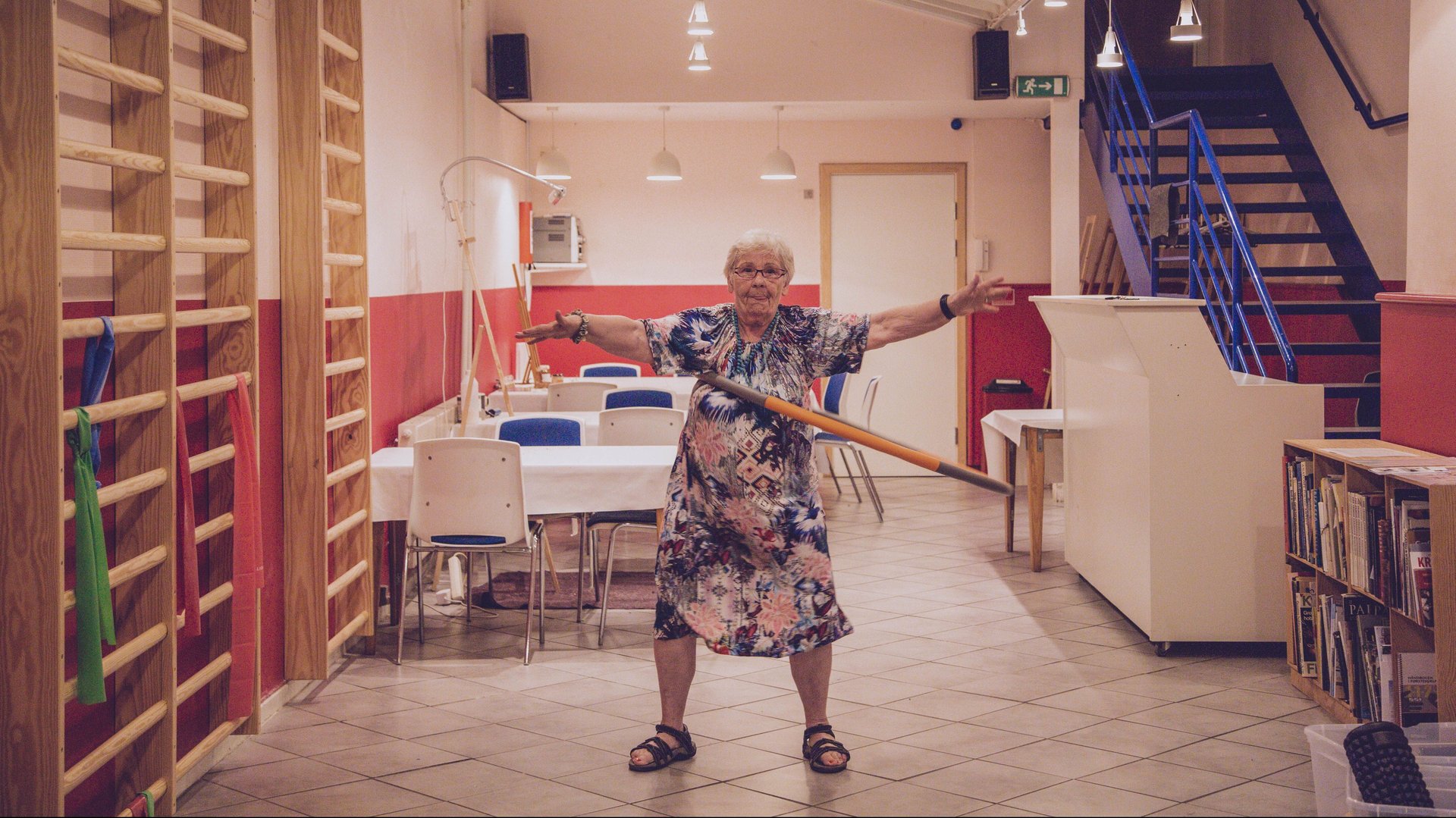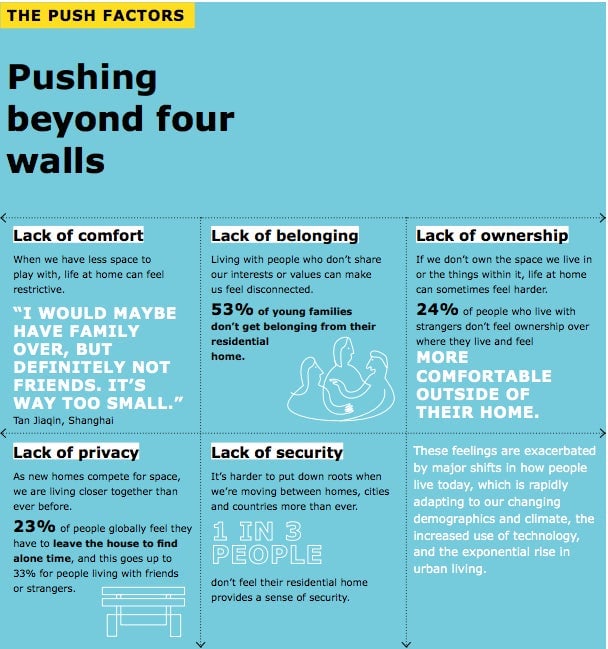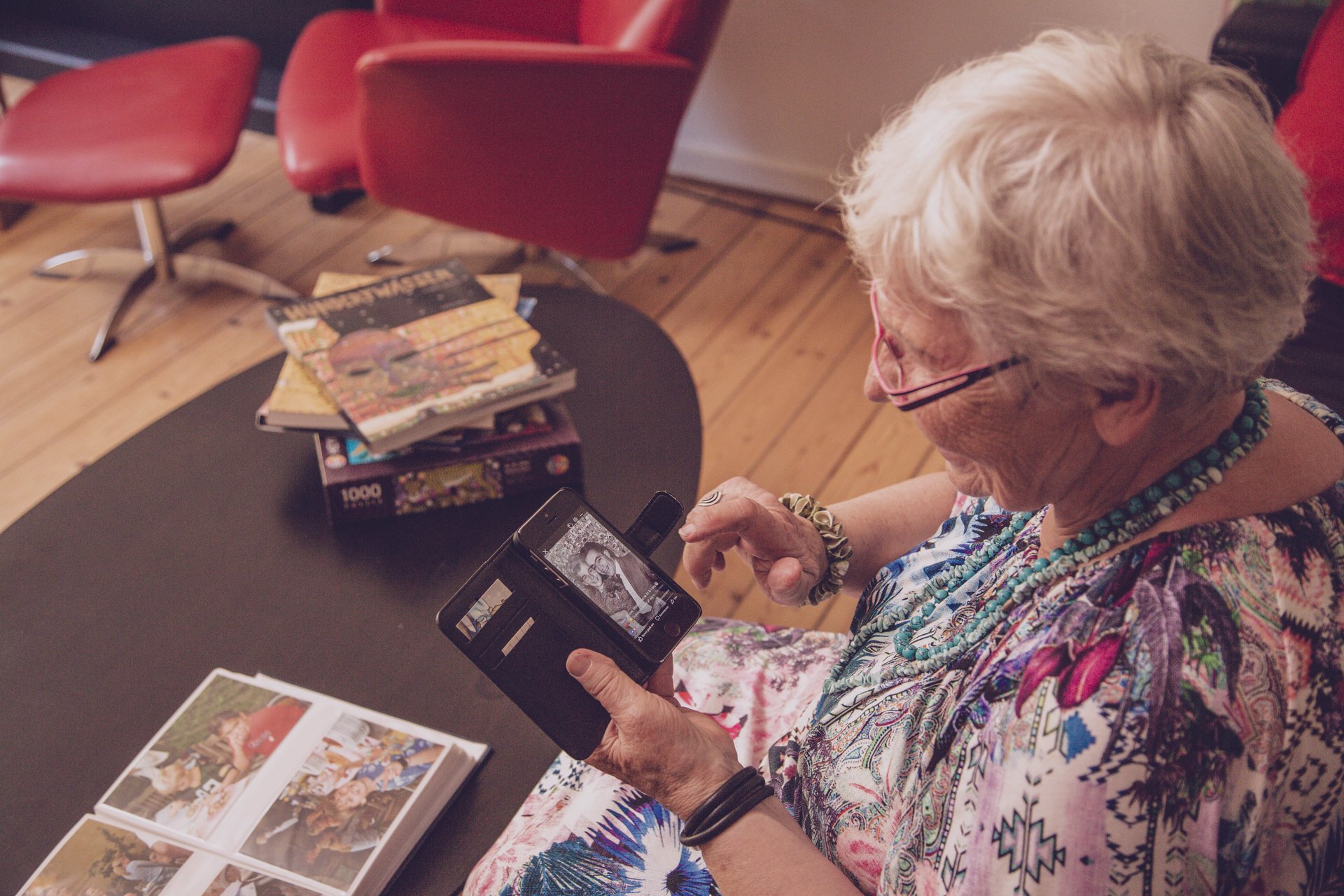IKEA investigates why so many of us don’t feel at home in our own homes
A new IKEA study suggests that one in three people don’t feel at home where they currently live. The malaise is even more extreme in cities, where 35% long to escape their homes.


A new IKEA study suggests that one in three people don’t feel at home where they currently live. The malaise is even more extreme in cities, where 35% long to escape their homes.
After interviewing nearly 23,000 respondents in 22 countries, IKEA’s ethnographers say that five components need to be present for one to feel “at home” in any space: privacy, security, comfort, ownership, and belonging. For many, these five emotional needs are no longer fulfilled by a single place. “Our physical homes are getting smaller, smarter, busier and noisier,” the report states. “All of this impacts on how successfully a single space can deliver what we need from it—functionally and emotionally. When we can’t get what we need at home, we head outside.”
This is a profound change from previous generations who pinned their aspirations and resources into building a grand, dream house. “After World War II the idea that homeownership was some sort of patriotic accomplishment—heavily promoted and partly subsidized by the government, in the form of tax breaks—took off,” writes real estate journalist Candace Johnson in the New York Times.
This attitude of homes serving as trophies of sorts is perfectly captured in the delightful 1948 comedy, Mr. Blandings Builds His Dream House. In this scene, Mr. and Mrs Blandings (played by Cary Grant and Myrna Loy) bombard their architect with wishes for their suburban paradise.
But ambitions have changed since, explains Jackson. “A decade ago, a dream home was designed to wow your friends and neighbors,” she says. “Today, it’s designed to house your relatives. Or your Airbnb guests. And also be your workplace. Homebuilders say one of the biggest selling points in 2018 isn’t a three-car garage or a grand entryway—it’s a home with flexibility.”
Feeling untethered to a particular address doesn’t necessarily have to be dour. Creating a sense of home in multiple places—real, virtual or imagined—can arguably even foster a sense of freedom. “We discovered a new behavior, where people use a network of spaces and places, both within and beyond the four walls [of their homes], as part of their homemaking experience,” says IKEA researcher Maria Jonsson. “We believe that this expanded notion of life at home gives people more opportunities to create the feeling of home, no matter where or how they live.”

Some find a sense of home in unexpected places. For instance, 45% of American respondents said they retreat to their parked car outside of the home to have a private moment to themselves. Millennials even find a sense of home in virtual platforms, social media, or online chat rooms. IKEA’s survey found that 21% of respondents aged 18-24 find that elusive feeling of belonging in virtual communities.

Now on its fifth iteration, IKEA’s Life at Home survey measures attitudes and living habits of IKEA’s customers around the world. Insights from the report inform the strategy, product development, and marketing initiatives for the world’s largest furniture manufacturer.